SEO is an important lever to improve brand visibility, lead generation, and revenue — especially when it comes to B2B SaaS companies. Google reports that 90% of B2B buyers research potential purchases using search engines — and if your content isn’t ranking, your competitor’s likely is.
Wondering how to grow your B2B SaaS company and think SEO might do the trick? You’ve come to the right place.
In This Article:
What is B2B SaaS SEO?
Why is SEO important for B2B SaaS?
Is SEO effective for B2B?
How to Create a B2B SaaS SEO Strategy
What is B2B SaaS SEO?
SEO (search engine optimization) is the process of improving your website to help search engines find, understand, and share your content so people can discover your website, product, or service. Organic search refers to the unpaid results that appear on a search engine result page (SERP) and is a term often associated with SEO because SEO tactics impact which webpages appear on a SERP and in what order.
B2B SaaS SEO is applying SEO methodologies to a B2B SaaS company’s website so it appears as high as possible in search results that are relevant for the company’s target audience and product. This drives qualified traffic to the website — and ideally, a portion of those visitors become leads and a portion of those leads become new users who generate new revenue for the company.
With organic search, B2B SaaS companies can consistently drive leads or product signups “for free,” which lowers customer acquisition cost (CAC). In fact, SEO can reduce the cost of customer acquisition by 87.41% on average compared to digital advertising, according to Terakeet.
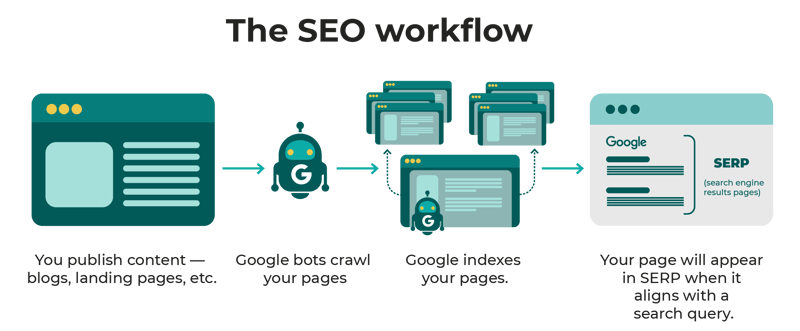
Why is SEO important for B2B SaaS?
SEO is important for B2B SaaS companies because they rely on consistently generating new leads and users to grow their revenue. Here’s an overview of the benefits:
- Increase Brand Awareness: Backlinking is when other companies or publications link to your website. It gets your brand in front of more people and also signals to search engines that your content is accurate and trustworthy, which has a positive impact on how your site ranks.
- Increase Traffic: When your content is ranking on the first page of search results for keywords that are relevant to your target audience, you will drive qualified traffic to your website.
- Increase Qualified Leads: When you drive qualified traffic to your site, you have the opportunity to convert those visitors into leads. The name of the game is creating valuable content that answers what your visitors are searching for and optimizing your pages for conversion.
- Increase Revenue: Hopefully, if your qualified leads increase, your revenue will also increase. In addition to generating revenue directly from organic search, increasing your brand awareness will indirectly help your lead generation and growth efforts.
Is SEO effective for B2B?
SEO has a long history of being effective for B2B SaaS companies in terms of increasing brand awareness, traffic, leads, and revenue. Check out a few examples.
HubSpot
HubSpot is a marketing automation platform that's killing it when it comes to their B2B SaaS SEO growth strategy. And they should be, as SEO makes up one of the key principles of inbound marketing. HubSpot knows their buyer persona inside and out and serves up content that matters to them. In return, about 13 million people visit their website organically every day.
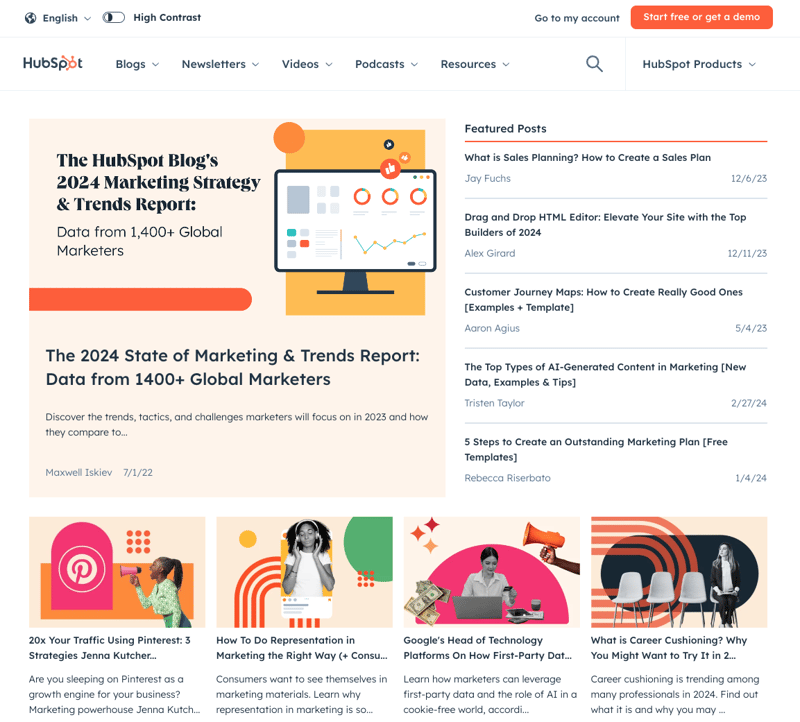
Canva
Canva is a design platform that's a bit of an anomaly here, as it has both B2B and B2C customers. Another anomaly: They rank incredibly well for high-volume keywords like “template” and “brochure.” But that’s because they’ve put in a ton of blood, sweat, and tears into nailing their B2B SaaS SEO strategy. They dive deep into search intent, and the content and products they offer are specifically designed to solve their audience’s pain points. The payoff? A staggering 200 million organic visits every day.
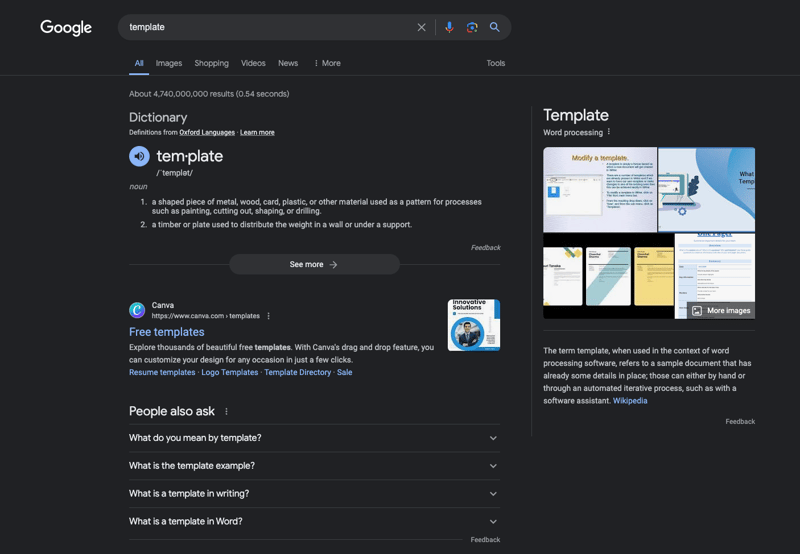
Jotform
Jotform is a lead generation form builder for B2B brands. Since its inception in 2006, Founder Aytekin Tank has had a lot of time to perfect the company’s approach to SEO. In 2021, the company underwent a massive rebranding, focusing on user experience and data-driven growth.
“By making upgrades that reach the largest number of people, even modest tweaks will have an outsized impact,” Tank says. “And had we not compiled and analyzed the data, we might never have noticed this blind spot. Instead, we would have spun our wheels working on something that wouldn’t have the same returns.” The result? Jotform now gets 1.5 million views from organic traffic per day.
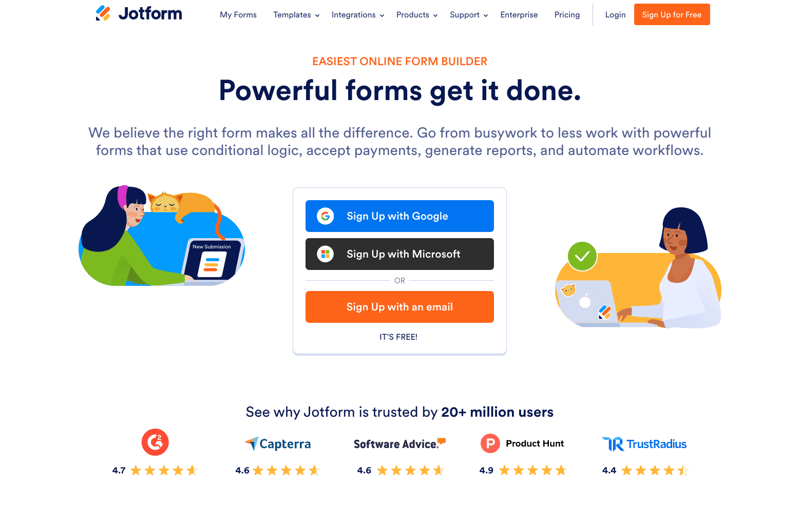
How to Create a B2B SaaS SEO Strategy
Creating an SEO strategy for a B2B SaaS company is very similar to creating an SEO strategy for SaaS companies generally, but there are some nuances. For example, your B2B company might drive website visitors to sign up for a demo (rather than to sign up for the product right away) and have a longer buyer’s journey, which you’ll need to keep in mind as you research keywords, optimize your funnel, and create content.
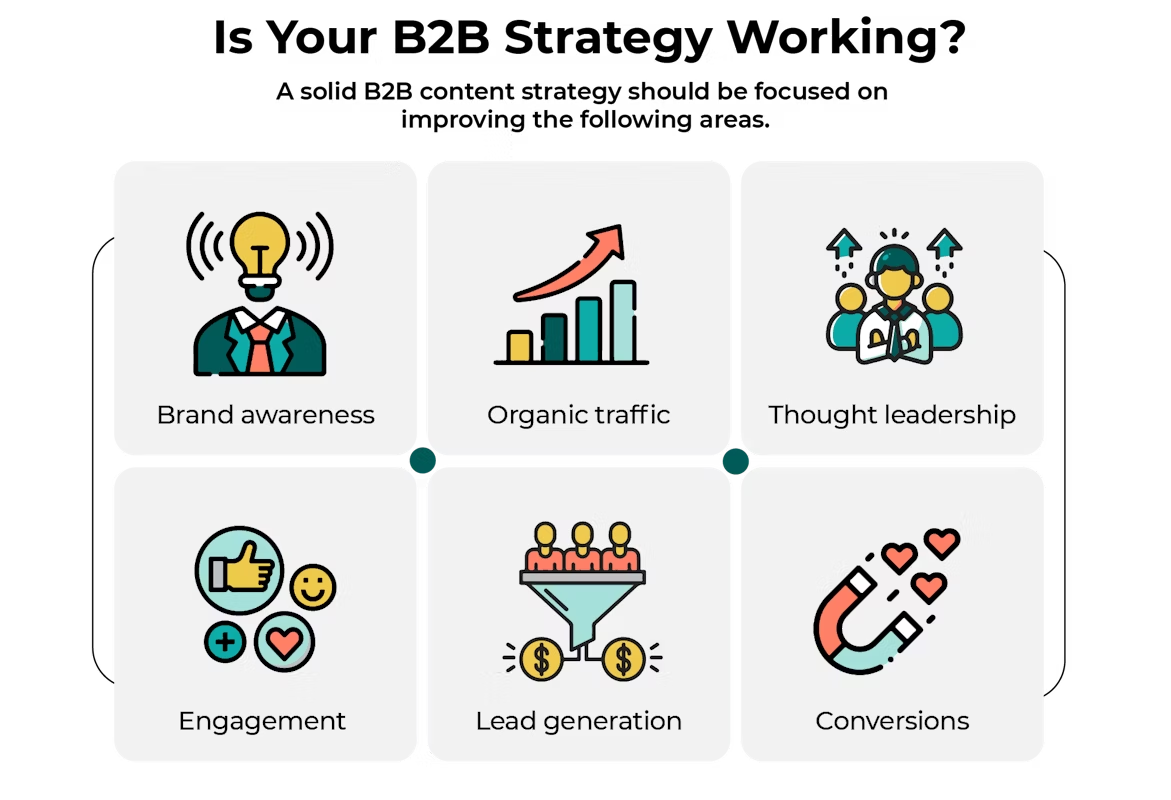
1. Optimize Conversion Funnels
Offer relevant calls to action (CTAs) on every webpage and piece of content that map to the goals of each stage of your marketing funnel.
For visitors in the awareness stage, focus on helping them name their problem and identify possible solutions. Once they’ve moved into the consideration stage, where they’re investigating solutions further, a low-pressure recorded demo might be a great fit. And once they have moved into the decision stage and are choosing their solution, go ahead and hit them with a demo or sign up CTA!
You also want to thoughtfully interlink your pages and content to move your visitors through your site to where you want them. Guide them from awareness-level pages down the funnel.
2. Create High-Quality Content
At its core, B2B SaaS SEO is really all about high-quality content. Focus on answering your potential customers’ questions and adding real value to their buyer’s journey, not on selling.
Remember that people consume things and learn in different ways, so create a broad mix of content: long and informative, short and shareable, as well as both written and multimedia types:
- Long-form content: white papers, ebooks, pillar pages
- Short-form content: blog posts, infographics, case studies
- Multimedia: webinars, videos, podcasts
Promote your content across multiple channels to get the broadest reach from each piece, including social channels, email, and discussion platforms like Quora or Reddit.
You should also plan multiple uses for every piece of content you generate. For example, if you’re hosting a webinar, capture attendee questions and turn the answers into blog posts.
Track how your content performs and recycle the top pieces into other types of content. For example, if a piece of long-form content is getting lots of traffic and conversions, turn it into a video series.
3. Balance Keywords with Readability
Keyword research and on-page optimization are crucial to B2B SaaS SEO. You can really target only one or two very closely related keywords with a single page. That means you’ll need to identify the keywords you want to address and create a prioritized plan for how you’ll cover them across your site. Think about what type of content is most appropriate for each term.
You’ll also want to map your keywords to your funnel (does that sound familiar?), pairing low-intent phrases like, “what is [product category] software?” with awareness content, and high-intent phrases like “how much does [your product] cost?” to decision content.
While keywords are critical, never forget that you're writing for real, live humans. That means you need to write naturally. Don’t keyword stuff! It’s not 1999, and Google is way more nuanced and intelligent today. Just talk about your SaaS platform the way you would in person, and you’ll most likely include all the right words to signal that you’re an expert in your space. Include your keywords in your meta tags and a few headers, then just write like a human.
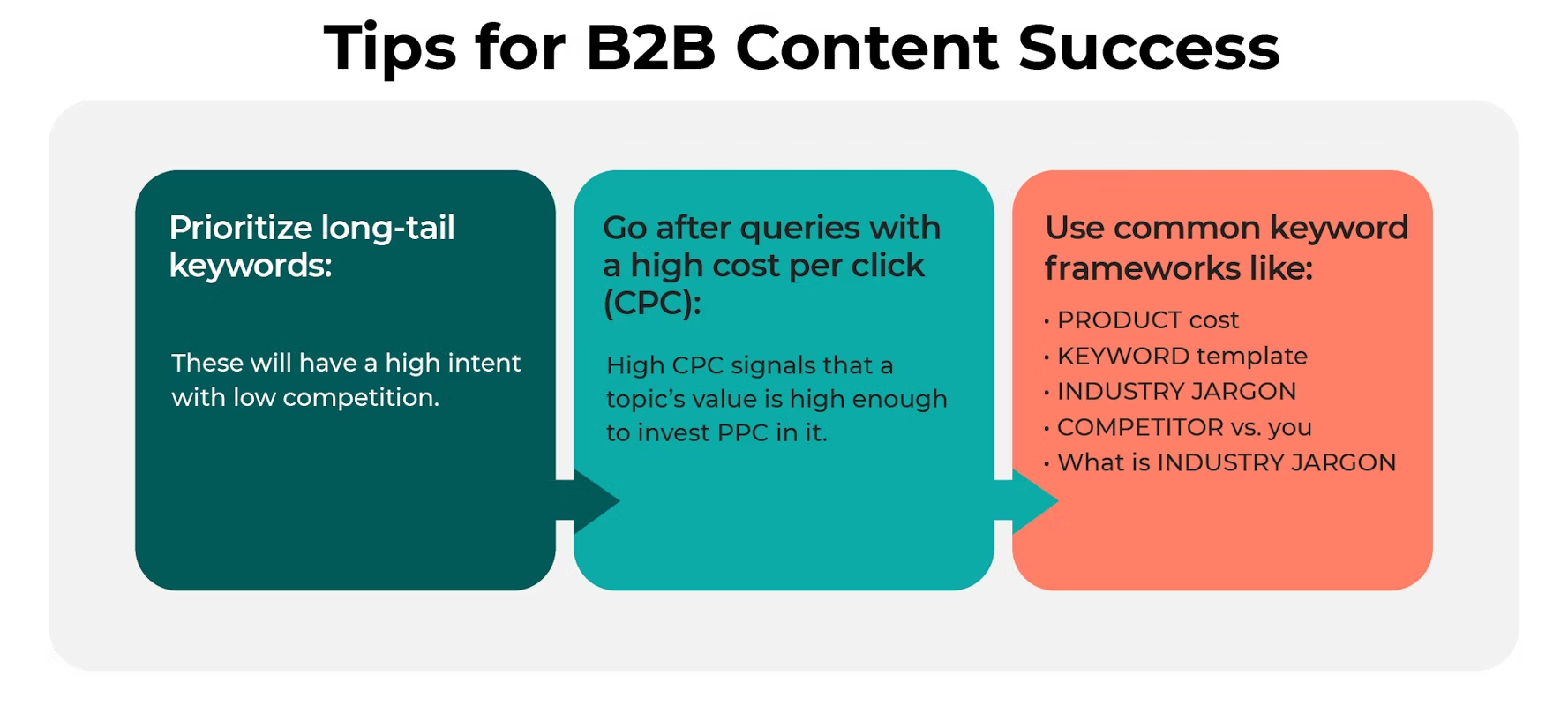
4. Don’t Ignore the Technical Stuff
Technical SEO can be overwhelming, but you need the basics in place to support a B2B SaaS SEO strategy. Here are a couple of high-level things that are easy to overlook, but will pay off:
- Make sure your site is optimized for mobile. Google doesn’t like non-responsive sites, and neither do your visitors.
- Have a valid SSL certificate in place to give site visitors confidence.
- Clean up your URL structure: create parent/child relationships and get rid of any long URLs with random nonsense or character strings in them.
- Confirm you have a sitemap and that it’s accurate and up to date.
- Search for and eliminate broken links and error messages.
- Identify and get rid of duplicate content — never use the exact same copy on more than one page.
.png?width=800&height=630&name=%238_V8%20(1).png)
5. Track The Impact of SEO on Your Pipeline
Sometimes the clichés are true: what gets measured, does get managed. You need to track your SEO performance to make sure you’re getting results from your efforts. Create reports that track:
- Organic traffic (unique visitors)
- Leads (or MQLs) from organic search
- Opportunities (or SQLs) from organic search
- Customers from organic search
- Revenue from organic search
- Conversion rates for each stage
- Individual CTA conversion rates
Need help with B2B SaaS SEO?
These tips will give you a start on your B2B SaaS SEO strategy, but SEO is a long-term investment that needs constant support. You may find your team needs help from a trusted SaaS SEO agency.
Our experts know what it takes to create a revenue-focused strategy and execute SEO for B2B SaaS companies like yours. Explore how our team can help your company increase organic traffic, qualified leads, and new business.





